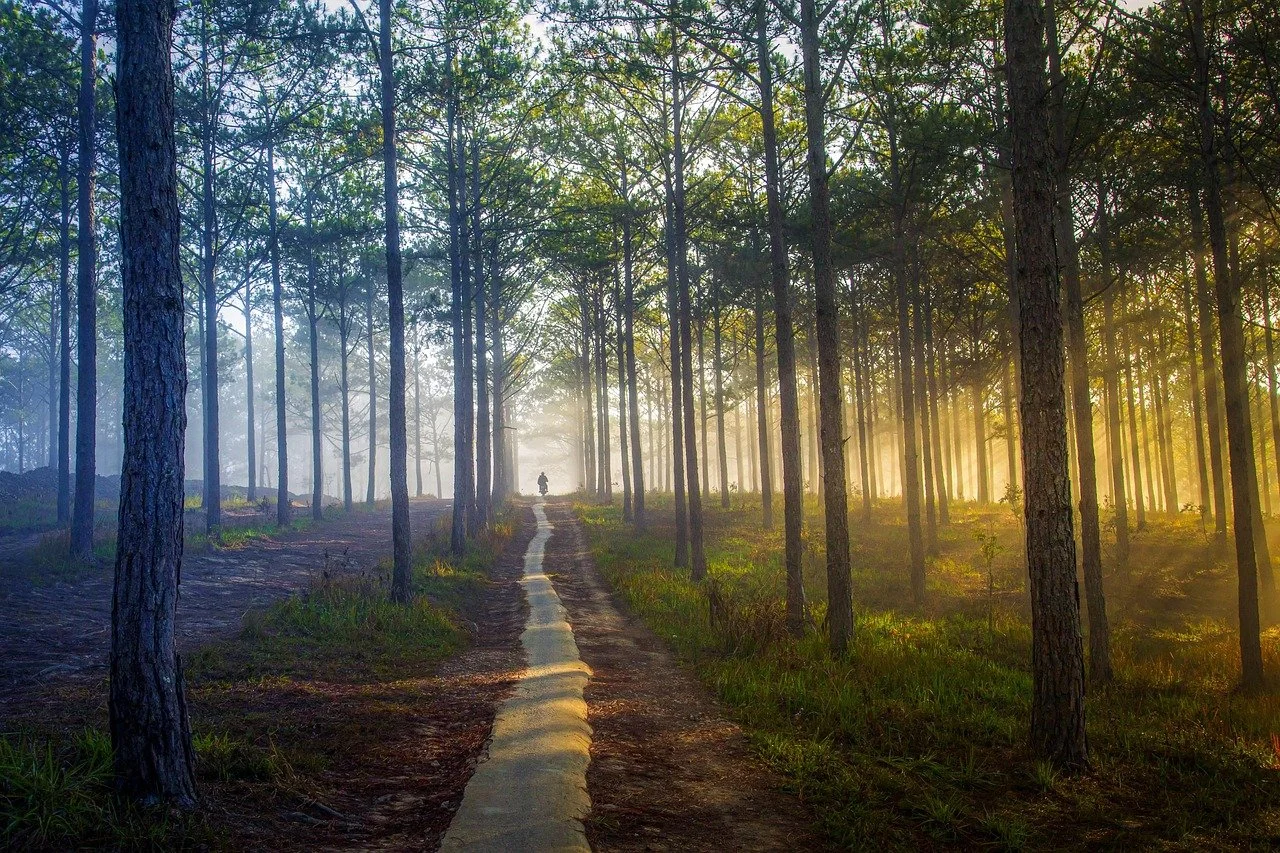What is the Middle Way?
The end of suffering
A path has purpose, a way out. Siddhartha Gautama realized this as he became the Buddha more than 2500 years ago. In his first teaching, the Buddha began by declaring that he had found a middle way out, a path between pleasure and pain. He had personally experienced both extremes and was offering a balanced, middle way, between asceticism and indulgence that lead him to insight, wisdom, and calm. The Buddha then introduced the truth of suffering (dukkha) and the truth of the origin of suffering. These are the first two truths of the Four Noble Truths.
Our pop culture discourse often stops there. Life is suffering! But that is far from all. What is forgotten, or often not remembered, are the goodies in the next two truths, the truth of the end of suffering and the truth of the path out. This path, the embodiment of the middle way, is called the Eightfold Path (more on that another day) and provides a detailed map and strategy to end suffering.
Defining suffering
Suffering is a loaded word in English and is often reserved for intense experiences of pain. I find it helpful to invoke other translations of dukkha such as dissatisfaction, stress, or misalignment to allow for a more expansive, accessible understanding of what the Buddha meant by suffering. For our purposes here, we’ll go with misalignment.
My understanding is that the word dukkha described when the holes for the spokes of a wheel are misaligned at the hub. When unaddressed, this misalignment could create all sorts of chronic problems. Imagine that old, wobbly wheel rolling down the dirt path deteriorating with each bump until it falls off into the woods. Lost. I have felt this both figuratively and literally. This is an experience of dukkha, or suffering, and we don’t have to live like this. We can experience the pain and still be gentle and tender.
Yoga and the Middle Way
This simple and profound teaching is reflected in yoga philosophy as well. Patanjali (maybe one person, maybe many), who is considered a contemporary of the Buddha, wrote the yoga sutras and had his own Eight Limbs of Yoga, much like the Eightfold path. The word yoga means yoke and comes from the Sanskrit word ‘yuj’ meaning to yolk together. In English we could say union. As we spin our wheel, imagine the hub at the middle joining together all the spokes to coordinate the equal and oppositional forces pushing and pulling as it turns. Imagine yourself as this hub, the middle, holding and coordinating all the varying spokes spinning in your life. Misalignment is inevitable, and calm and balance can be as well.
Have you had that experience in your everyday life? Being pulled in equal and opposite directions while you stand in the middle trying not to be pulled apart? A complex, visceral web of tug of war. A misaligned, wobbly wheel spinning out of control flying off into the woods. Scary! Love and hate, good and bad, pleasure and pain. Without the tools and skills to coordinate these equal and oppositional forces we experience misalignment in our body and mind.
Our mission
Our mission at Middle Way Wellness is to help people develop the tools and skills to heal, grow, and build their lives with intention. We chose the middle way as the foundational framework for our practice because it offers an accessible structure and path to align our mission, values, and effort. It does not define us, but it is an organizing idea. It is applicable to modalities both modern and ancient and a strong anchor for our everyday work as individuals, and a community.
I feel it is important to name that this is not a practice of walking the middle path of everything, only seeking compromise, or becoming a perennial moderate. It is quite the opposite. Presence demands courage and boldness. The practice of the middle way allows us to welcome whatever arrives at the door while remaining balanced. As Rumi wrote, “be grateful for whoever comes, because each has been sent as a guide from beyond.” In a country where we emphasize the pursuit of happiness, it is just as important, if not more, to welcome and pursue our sadness with the same love, adoration, and vigor.
Our vision
Our vision is a less lonely, more connected world. At its core I think this connection is love. Self-love and love for others. The loneliness is all the stuff that gets in the way. To get back to that basic goodness, that primordial love, we must clear the path and find our way out. We each must walk this path, but that does not mean we have to walk alone. There is community. You are not alone. Join us at Middle Way Wellness and let’s walk together.
- Andrew

